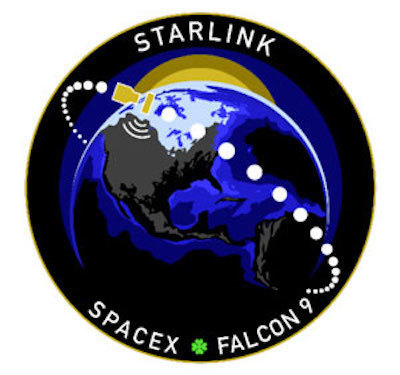27.08.2021
There's a reason for the recent lull.

COLORADO SPRINGS, Colo. — SpaceX hasn't launched any Starlink internet satellites since June. It turns out it's because the company has been adding "lasers" to the spacecraft.
Since it last launched a batch of Starlink satellites to low Earth orbit on June 30, SpaceX has been quiet about what's next for the constellation. With Starlink launches happening frequently in the first half of 2021, this pause raised questions. On Tuesday (Aug. 24), at the 36th annual Space Symposium here, SpaceX President and chief operating officer Gwynne Shotwell explained the break.
"We're flying a number of laser terminals right now in space," Shotwell said, adding that SpaceX is now working to integrate lasers into all of its Starlink satellites.
"That's why we have been struggling for six or eight weeks — we wanted the next set to have laser terminals on them," Shotwell said.
These laser terminals, or laser crosslinks, were added to a batch of Starlink satellites back in January 2021. These links allow satellites to transfer information to one another and communicate in other ways as well.
With this technology, SpaceX hopes that ground stations on Earth won't be necessary with every batch of satellites as part of the constellation. Making this change could allow satellite internet coverage to reach areas where ground stations cannot be built, Shotwell explained.
The recent launch lull won't last much longer, however. SpaceX aims to start lofting Starlink satellites again in approximately three weeks, Shotwell said at the conference.
SpaceX continues to grow its Starlink constellation, which the company hopes will be able to provide internet service to people around the globe, even in remote areas that do not currently have reliable internet.
There are currently over 1,600 Starlink satellites in orbit, and that number will continue to grow; SpaceX has filed paperwork for up to 42,000 satellites for the constellation. But the company is actively thinking about ways to prevent collisions and to minimize risks in orbit, Shotwell said.
"The worst thing in the world is to have a collision," Shotwell said on Tuesday, adding that Starlink employs autonomous collision avoidance technology.
Quelle: SC
+++
Liquid oxygen shortage squeezes SpaceX launch plans
COLORADO SPRINGS — A widespread shortage of liquid oxygen linked to the latest wave of the pandemic could affect SpaceX’s launch schedule, a company executive said Aug. 24.
Speaking on a panel at the 36th Space Symposium here, Gwynne Shotwell, president and chief operating officer of SpaceX, cited difficulties in securing supplies of liquid oxygen as one of its biggest supply chain concerns.
“We’re actually going to be impacted this year with the lack of liquid oxygen for launch,” she said. “We certainly are going to make sure the hospitals are going to have the oxygen that they need, but for anybody who has liquid oxygen to spare, send me an email.”
Liquid oxygen is one of the most commonly used propellants in launch vehicles. It serves as an oxidizer in combination with fuels such as liquid hydrogen, kerosene and methane.
Demand for liquid oxygen has soared in recent weeks because of the rise of COVID-19 cases caused by the delta variant. Hospitals use liquid oxygen as a source of oxygen for ventilators.
That demand has had wide-ranging effects on the liquid oxygen supply chain. In Florida, the Orlando Utilities Commission announced Aug. 20 that its weekly deliveries of liquid oxygen, used in water purification systems, had been cut by up to 50%. Officials asked city residents and businesses to reduce their use of water to avoid water shortages that could be caused by the reduced capacity of its purification systems.
Shotwell didn’t elaborate on the impacts of the liquid oxygen shortage on its launch schedule. The company has not launched a Falcon 9 rocket since June 30, an unusually long hiatus caused in part by delays in the production of new Starlink satellites with laser inter-satellite links. However, SpaceX is scheduled to end that break with the Falcon 9 launch of a cargo Dragon spacecraft to the International Space Station Aug. 28 from the Kennedy Space Center.
Other companies are seeing impacts of the liquid oxygen shortage. In a tweet after the conference session, Tory Bruno, chief executive of United Launch Alliance, said that the government contractor that supplies nitrogen for its launch facilities at Vandenberg Space Force Base in California is now working on addressing the liquid oxygen shortage in Florida.
That could impact plans for the launch of the Landsat 9 spacecraft from Vandenberg on an Atlas 5, currently scheduled Sept. 16. “Working that situation now,” Bruno said.
Quelle: SN
